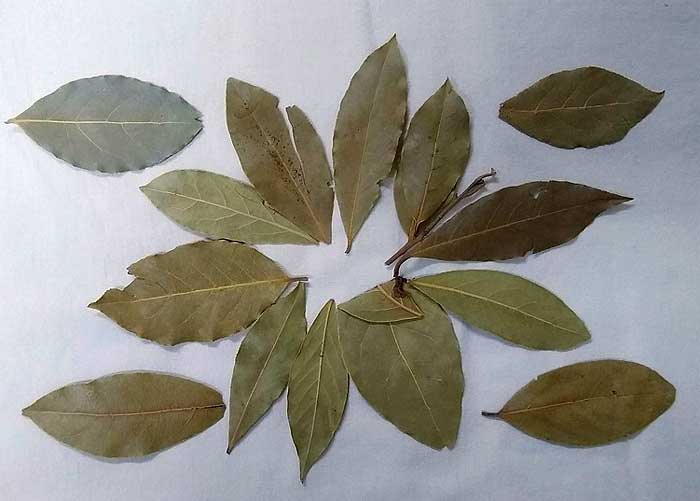Bay in herbal medicine
Bay (Laurus nobilis) is a well known culinary and medicinal herb. It is used to flavor stews, meats, a variety of other delicious recipes. Bay is also used to treat many health conditions since it is healing, relaxing, and warming.

Bay leaves have a pungent aroma that helps to relax the mind and body. The scent is warm and spicy, perfect for helping ward off chills during the cold, winter months. Keep cold and chills at bay with bay!

Bay as a natural remedy
Bay is used in herbal medicine to treat everything from cancer to intestinal gas. Bay promotes sweating, increases circulation, and brings about restful sleep.
Ground bay leaf
Ground up bay leaves can help heal boils and other skin infections. The ground up leaves can also lower blood sugar and cholesterol levels in some people.
Bay essential oil
Bay essential oil is distilled from the leaves and berries of the plant. Considered magical by some cultures, it is a potent oil used in prophesy and to avert the evil eye.
Bay essential oil stimulates circulation. It can help speed the healing of sprains and pulled muscles when diluted and applied as a compress.
When used in aromatherapy, bay brings about better concentration which also helps in prayer and meditation. Bay essential oil is used to open the mind.
Use bay to treat chronic conditions.
A powerful antibacterial and anti-inflammatory oil, bay essential oil is used as a natural treatment for arthritis and rheumatism.
Studies show that basil essential oil is a powerful antioxidant that really does a number on harmful free radicals.
Basil essential oil shows promise in the treatment of diabetes. The oil is able to scavenge and prevent the formation of hydroxyl radicals. This helps stop molecular and cellular damage that is so prevalent in diabetics.
The oil is antibacterial, anti-fungal, analgesic, and anti-inflammatory.
It is also used to treat earaches and to lower blood pressure. Avoid using bay essential oil on sensitive skin as rash may develop.
Use bay essential oil to treat dandruff.
Bay essential oil is often used as a natural treatment for dandruff and other scalp conditions. Bay can also be used in cases of oily skin but as always, should be well diluted first.
Buy bay leaves from Turkey for the best flavor.
Turkish bay leaves are cherished by knowledgeable chefs. Bay leaves are indispensable to some cuisines, especially French, Mediterranean, and Indian foods.

Bay leaf in the kitchen
Bay leaves are often used in the kitchen especially with soups, stews, and rice dishes. It can become bitter if cooked too long. Bay, always popular, was named 2009 Herb of the Year by the International Herb Association.
Bugs and bay
Bay is also useful for keeping bugs away. Sprinkle essential oil or use whole plant leaves in pantries, cabinets, drawers, and closets.
Bay is kin to mountain laurel
Bay is kin to the laurels and originates from Asia - although most dried bay leaves that we purchase from stores is grown in Turkey.
*Never use straight bay essential oil on skin and never take it internally. Stop using bay at least two weeks before surgery. Do not take therapeutic amounts of bay for over a few days.
Dilute essential oils before use. Never take essential oils internally unless advised by your healthcare professional.
Always consult with your healthcare professional before using any herbal remedy or essential oil especially if breast feeding, if pregnant, or if you are taking any prescription or over-the-counter medicines.
Sources:
https://www.ncbi.nlm.nih.gov/pmc/articles/PMC3813252/
https://journals.lww.com/nutritiontodayonline/
Blessings to you and yours!
Thanks so much for reading my blog. Jan.

*Note - the information on this website has not been evaluated by the Food and Drug Administration.
© 2005-2024 website design and content by Janice Boling